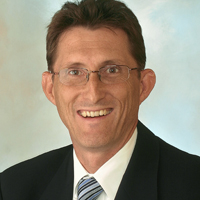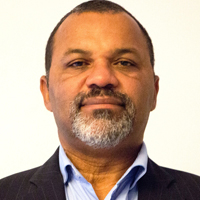
TVN Tech | Tech Trends For ’21: COVID-Driven Shifts Extend

A shift to remote production workflows and increased use of cloud technology are two big broadcast technology trends driven by the COVID-19 pandemic that are expected to persist through 2021 and well into the future, say both broadcasters and vendors.
Meanwhile, ongoing technology transitions that have been slowed somewhat by the pandemic, such as replacing aging on-premise HD-SDI gear with IP infrastructures and the rollout of the new ATSC 3.0 broadcast standard, are expected to pick up speed.
By far, the biggest overall technology trend is a move away from investing in on-premise hardware infrastructure to an increased reliance on the cloud, where core broadcast functions can be supported by running software applications in data centers owned and run by public cloud platforms like Amazon Web Services (AWS), Microsoft Azure or Google Cloud.
That shift was underway before the COVID-19 lockdowns hit in March—Discovery and Disney have been playing their cable channels from the cloud for years, and last December Fox announced a big deal to use AWS’s cloud technology to support ingest, production and playout for all of its businesses including the Fox owned stations. But it has taken on new urgency as local stations and networks forced to abandon their facilities have relied on the cloud for content ingest, editing and collaboration to maintain news and sports production.
Dan Pisarski, VP of engineering for IP transport vendor LiveU, says there was certainly interest in using the cloud for news production before, but COVID gave it a significant jumpstart. “The global crisis really accelerated the timeline end users had to follow,” Pisarski says.
Through the pandemic, bonded cellular systems like LiveU’s have often been used as the “front end” to get content into the cloud, where it could then be accessed by station staff working remotely from home. In that vein, LiveU has partnered with Grass Valley to create a pre-integrated cloud production solution where live feeds can be sent from LiveU backpack units and switched in the cloud using Grass Valley’s GV AMPP (Agile Media Processing Platform) software.
The Cloud And DTC
But the cloud means more to broadcasters than just new remote production workflows. In recent months big media companies such as Disney, NBC Universal, WarnerMedia and ViacomCBS have all undertaken major reorganizations to refocus their businesses on direct-to-consumer (DTC) streaming services. And the cloud is the technical foundation of those DTC strategies.
For example, on Tuesday ViacomCBS announced its own sweeping deal with AWS, making it “the preferred cloud provider for ViacomCBS’s global broadcast media operations.” As part of the agreement, ViacomCBS will move operations for “its entire broadcast footprint,” including 425 linear television channels and 40 global data and media centers, to the AWS cloud. ViacomCBS said the move would allow it achieve efficiencies and cost savings, provide easier access to content for licensing partners and “reliably deliver new viewing experiences to consumers by broadcasting and streaming content on any device.”
Many big broadcast vendors agree that the cloud offers customers new flexibility, and most already have developed versions of their products that can be run on the cloud and are sold on a software as a service (SaaS) basis.

Jeff Rosica
“Moving to SaaS or a cloud-based environment is going to be more flexible and is going to be able to innovate faster,” says Avid CEO Jeff Rosica, who adds that Avid has been working with big Hollywood and broadcast clients on moving their workflows to the cloud for several years.
Hybridity Will Persist
Most streaming and OTT services are already delivered from the cloud today, of course. But moving entire broadcast operations, particularly live news and sports production, is much harder due to the latency imposed by moving compressed signals through the internet. In that vein, many technology experts predict that a hybrid model of both on-premise and cloud technology will persist for some time for broadcast operations.
Sinclair Broadcast Group is bullish on using the cloud for playout and content storage functions. But EVP and CTO Del Parks notes that news production is a very collaborative exercise, and he expects that after the COVID-19 pandemic situation improves many staffers will return to their newsrooms and studios. As such, it makes sense to keep most production gear on-premise at stations instead of moving those functions to the cloud.

Del Parks
“Whether the playout of channels stays at the TV station, that’s a different story,” Parks says. “In our model, local production for news stays at the TV station, and everything else gets put in the cloud. So it’s kind of a hybrid.”
Cloud providers have been tackling the production problem as they seek to grab more broadcast business. AWS recently developed a new technology to support uncompressed production workflows in the cloud, the Cloud Digital Interface (CDI). CDI supports uncompressed video at formats up to 4K UHD at 60 frames per second with a latency as low as 8 milliseconds, or less than one frame.
“Amazon is stepping up with standards that really reduce latency and make production work in the cloud,” says WarnerMedia EVP of Engineering Bob Hesskamp, though he says there is still much work to do.
WarnerMedia’s Multi-Year Plan
WarnerMedia has been one of the biggest investors in IP routing technology based on the SMPTE 2110 standard, launching an all-IP broadcast center for CNN at Hudson Yards in New York last year and also embarking on a multi-year project to create IP playout and master control facilities at its Techwood campus in Atlanta, home of Turner’s sports and entertainment channels.
Now that the company has put the CNN Center in Atlanta up for sale, WarnerMedia is looking to consolidate all of its Atlanta operations at Techwood, including creating a new common IP infrastructure for sports and news production that will replacing aging HD-SDI control room gear currently used in both facilities. It expects the overall move to take three to five years.
While WarnerMedia is investing in on-premise IP gear at Techwood for its primary systems, it wants to use the cloud as its disaster recovery system, replicating the functionality it has enjoyed by using the Techwood and CNN Center facilities to back each other up. WarnerMedia is already using the AWS cloud to back up its 30 HBO channels after moving their playout from Hauppauge, N.Y. to Atlanta, running redundant streams it can instantly switch to in case of failure.
Now the company wants to do the same thing for the news and sports properties playing out of Techwood, as it doesn’t want to build a second physical site.

Bob Hesskamp
Synchronizing the feeds will be a challenge, due to the dynamic nature of news and sports programming, Hesskamp says, but WarnerMedia has “time to sweat the systems” before switching to cloud backup.
“When you go into an NBA timeout, you don’t know if it’s going to be a 20-second, 30-second or minute timeout; you’re rolling that break based on the command you get, and it’s got to be instantaneous on how you approach that next spot,” he says. “Same thing with news, you bust out of breaks because there’s a press conference with somebody speaking, or there’s breaking news.
“You have to have that live synchronized switching all the time on these channels,” Hesskamp says. “And that’s really important for us, and a big learning we’re going to undertake over the next couple of years.”
Remote Access’ Importance, Centralized Hub Prospects
In addition to the cloud, achieving remote access to on-premise systems at the station has been another way broadcasters have maintained their master control and production operations through COVID-19. For example, Sony has developed new capabilities for its established ELC production automation system that have been employed by several large station groups in remote production workflows including Tegna, E.W. Scripps, Graham Media, Nexstar and CBS.
ELC offers several disaster recovery and remote production models. In one, the ELC control system at one station can be used to remotely control all of the production equipment run by ELC at a sister station. That allows a station in San Francisco to remotely produce a newscast for a New York station, for example, if its staff had to evacuate due to a crisis.
Another model is using ELC to control cameras, mics and lighting in a satellite studio at a sister station, with the control interface and all of the back-end hardware located at the mother station. Yet another scenario is placing ELC in a central production hub, where operators can run the newscasts for several different markets via low-latency links. Finally, stations can use ELC’s web-based interface to allow one operator to remote directly a newscast from home, something several big-market stations have been doing regularly through the pandemic.

Jason Weintraub
Sony’s Jason Weintraub, product manager for ELC, says that ELC could be used to create a centralized hub where a small team of directors produce news for multiple time zones, similar to the “Andrews Hub” model that NEP has created in Australia to remotely produce sports all across Australia from two dedicated production facilities in Sydney and Melbourne. Whether that actually happens would obviously hinge on several factors, including existing labor contracts.
“There is potential for people to work remotely,” Weintraub says. “There is the potential 10 years from now, even five years, where you could employ a group of directors to work from a centralized hub and remotely control the news.”
NextGen TV’s Next Steps
The COVID-19 pandemic has definitely impacted the rollout of the ATSC 3.0 broadcast standard, or “NextGen TV,” which major station groups had initially pledged at NAB 2019 to deploy in the top 40 markets by the end of this year. The actual number of 3.0 deployments is likely to be 20 markets by the end of this month, says Anne Schelle, managing director of broadcast consortium Pearl TV.

Ralph Bachofen
Triveni Digital, which provides program guide and test and measurement software for 3.0, has been involved in most launches to date, says VP of Sales and Marketing Ralph Bachofen. Because Triveni’s products are software-based, the company been able to do most of the required work remotely in the face of COVID-19 social distancing requirements.
Bachofen says that the pandemic definitely had an impact on 3.0 rollouts. But he says the hectic election season this fall also was a factor as broadcasters didn’t want to play with their transmission chains with so many dollars on the line, slowing activity in the last quarter. He is hopeful that 2021 will see significantly more progress.
“It looks like we’re going to have a fairly busy first half of turning markets over,” Bachofen says. “But the trend of COVID is not going in the right direction, so it’s tough to project what the pace is.”

David Mouen
Compression vendor Harmonic also hasn’t seen as much 3.0 business as expected, says David Mouen, Harmonic’s senior market manager for broadcast. He says that existing customers have been able to refresh their late-model MPEG-2 encoders to more efficiently compress multiple ATSC 1.0 channels, facilitating the channel-stacking arrangements that are necessary to clear spectrum in order to launch 3.0 service in a market. Mouen estimates that perhaps 200,000 to 300,000 3.0-capable consumer TV sets shipped this year, with perhaps a million coming in 2021.
Harmonic has won some new 3.0 business from Edge Networks, which has launched a pay-TV service, Evoca, in Boise, Idaho based on broadcasting 3.0 from LPTV stations in the market supplemented by OTT delivery. The Edge Networks installation is using on-premise Harmonic encoders in combination with the company’s cloud-based VOS 360 Live Streaming Platform to deliver over 80 channels of live and on-demand programming to Evoca subscribers.
Schelle says 3.0 will be live in “well over 40 markets by the end of next year,” with broadcasters shooting to have between 60 and 75 markets on-air.
Detroit stations are now live with 3.0 and will serve as a dedicated testbed for automotive applications, dubbed the “Motown 3.0 Test Track,” supplementing existing automotive tests with 3.0 using the Single Frequency Network (SFN) that is now operational in the Phoenix Model Market. Pearl TV will also soon announce its first integration with a cable operator for 3.0, she says.

Anne Schelle
Schelle doesn’t have any hard data on 3.0 set sales to date but says the Consumer Technology Association (CTA) will release its five-year projections in early January. So far Pearl TV has launched a promotional campaign for NextGen TV in five markets, and the TVs are available at Costco and Best Buy stores nationwide.
“I think we’re feeling good about our position right now, certainly given the COVID situation where we weren’t able to get into facilities this summer,” Schelle says.


































Comments (0)